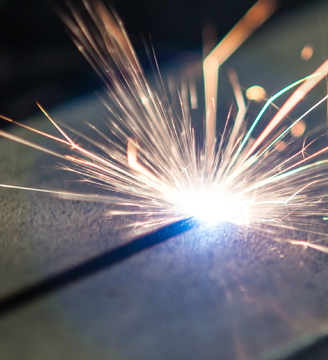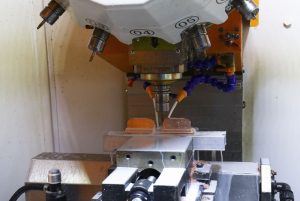“Numerical control (computer numerical control, CNC) is the automated control of machining tools (such as drills, lathes, mills and 3D printers) by means of a computer.”-From Wikipedia.
In fact, CNC has different meanings on different occasions. But when we generally mention CNC, we will associate it with CNC processing. CNC is the abbreviation of computer number control. I believe that some friends who know English know it well. This English means computer number control.
In short, computer-controlled digital processing is also known as CNC hardware processing, also known as computer gong processing, CNC ch or CNC machine tool processing. In Guangzhou, Jiangsu, Zhejiang and Shanghai, a new type of machining called “CNC machining center” is a new processing technology. Its main work is to compile processing programs, that is, to convert the original manual activities into computer programming. Of course, experience in manual processing is required.
The process involves designing a program with an added set of commands that sequentially determine the position and rotation of the tool. This way, its exact position and speed of movement can be controlled depending on the material used to make the desired part.
On one hand, the first stage of the process involves using CNC machinery to manufacture the precise design of the part. Usually done using a CAD computer-aided drafting program.
On the other hand, When the CNC system starts up, the required cut outs are programmed into the software and instructed to the appropriate tools and machinery, which perform the specified dimensional tasks, just like a robot.
In CNC programming, code generators in digital systems often assume that the mechanism is flawless, although there is a possibility of error, which is more likely when the CNC machine is instructed to cut in multiple directions at the same time. The position of the tool in the CNC is outlined by a series of inputs called a part program.
For CNC machines, the program is entered via punch cards. In contrast, programs for CNC machine tools are entered into a computer via a keypad. CNC programming is stored in computer memory. The code itself is written and edited by programmers. Therefore, CNC systems provide a wider range of computing capabilities. Most importantly, the CNC system is by no means static, as updated prompts can be added to existing programs through modified code.
Types of CNC Machines
1. Router: CNC routers are often used to cut large sizes of wood, metal, sheet and plastic. Standard routers work on three-axis coordinates, so they can cut in three dimensions. However, you can also buy 4, 5 and 6 axis machines for prototype models and complex shapes.
2. Plasma Cutting Machine: CNC Plasma Cutting Machine uses powerful laser cutting. Most plasma cutters cut programmed shapes from sheet or sheet metal.
3. Milling: Manual milling machines use a hand wheel and lead screw to attach the tool to the work piece. In a CNC milling machine, the CNC moves a high-precision ball screw to the programmed precise coordinates. CNC Milling Machines come in many sizes and types and can operate on multiple axes.
4. Lathe: This type of CNC turns the work piece and moves the tool onto the work piece. A basic lathe is 2 axes, but more axes can be added to increase the complexity of the cut. The material is spun on a spindle and pressed against a grinding or engraving tool to create the desired shape. The lathes are used to create symmetrical objects such as spheres, cones or cylinders. Many CNC machines are versatile and combine all types of cutting.




